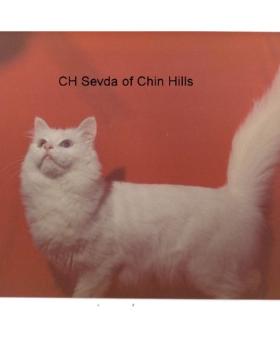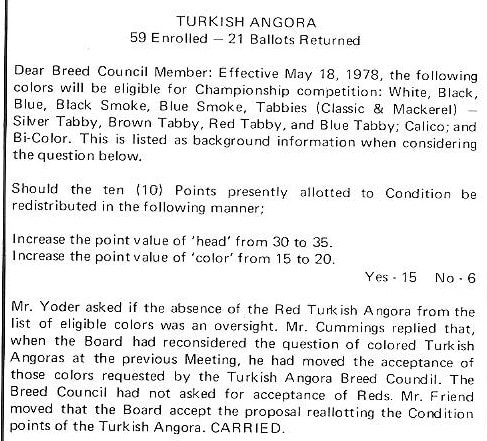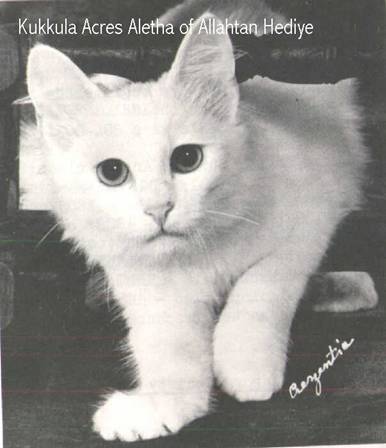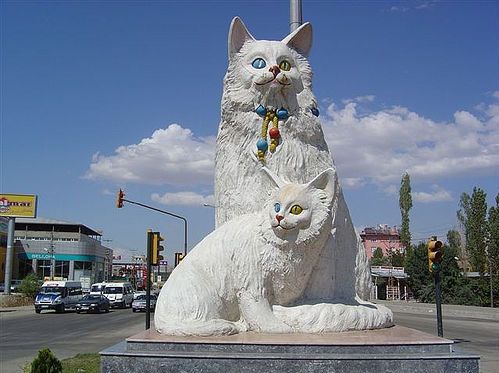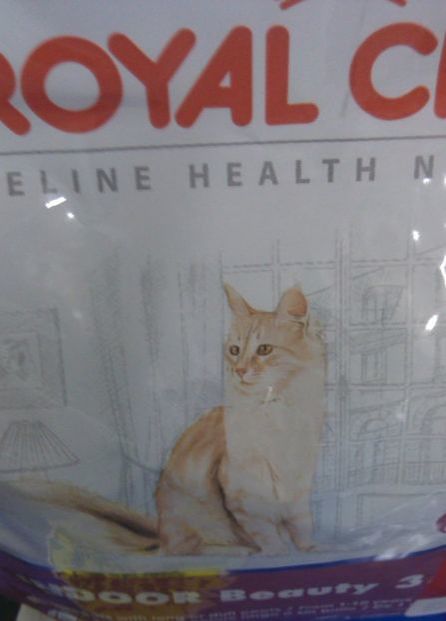A Natural Breed and a National Treasure
The Turkish Angora is one of the oldest cat breeds on earth. Recognized as the origin of the mutation for the dominant white color, as well as the original mutation for long hair, the TA is classified in its native country as a protected national treasure.
Breed Notes
The Turkish Angora is thought to have evolved the gene responsible for longhair, to cope with the varying temperatures in Turkey. Their single coat tends to "molt" in the spring and in the fall, in preparation for the weather ahead. This coat is also easy to care for, requiring weekly combing to ensure the dead hair is cleared. They are a small breed that can appear fragile, but they are anything but. High energy, a Turk will explore anyplace they can fit in - and jump to. They have above- average intelligence, so expect them to be able to learn tricks, as well as pull some on their owners!
Breed Notes
The Turkish Angora is thought to have evolved the gene responsible for longhair, to cope with the varying temperatures in Turkey. Their single coat tends to "molt" in the spring and in the fall, in preparation for the weather ahead. This coat is also easy to care for, requiring weekly combing to ensure the dead hair is cleared. They are a small breed that can appear fragile, but they are anything but. High energy, a Turk will explore anyplace they can fit in - and jump to. They have above- average intelligence, so expect them to be able to learn tricks, as well as pull some on their owners!
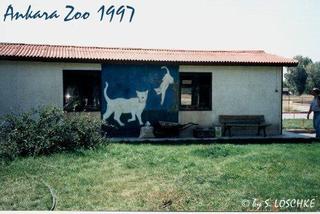
Breed History
Legends exist throughout history about the Turkish Angora, the most famous being about the odd-eyed white cat who slept on the robe sleeve of the prophet Mohammed. Rather than wake the cat when he rose, he had aides cut off the sleeve to allow the cat to sleep. Another legend is that Mustafa Kemal Ataturk, the founder of the Turkish Republic, would be reborn one day in the shape of a Turkish Angora with one blue and one golden eye. Yet another legend stated the successor to Ataturk would be chosen by a bite on the ankle by an odd eyed white cat.
In the Turkish Islamic culture, cats were animals to be cared for and accommodated. Turkish traders, especially dealers of textiles, would then take great care of the white cats who would keep their shop free of vermin that would destroy their stocks. This also meant that owners of these cats were among the wealthiest classes.
The TA is thought to have been spread from Turkey with caravans of merchants and diplomats. Often, they were brought as gifts to royalty in other nations, which led to the introduction of both dominant white color and long hair in other breeds across Asia and Europe. Today, the dominant white gene, as well as the polygene for blue and odd eyes, forever exists in the Persian and now other gene pools where Angora breeding stock was used.
This pure, natural breed can trace its written history as far back as 16th-century France. Until about 1520, there were no longhaired cats in Europe. The first TAs were imported by Pietro della Valle to Italy, and by Nicolas Claude Febri de Pieresc to France. These cats were well represented in the late 1800s and into the 1900s, during the dawn of the purebred cat fancy in continental Europe and Great Britain. The beautiful white cat from Turkey was used by the Victorians to launch a breeding program that eventually created the hugely popular Persian breed. However, as the Persian-type cat began to grow in popularity in the UK, the Angora fell out of fashion. The TA was bred to the Persian to soften the harsh coat of the Persians of the day, with no one bothering to do Angora breedings to continue the lines. As a result, the Angoras were largely lost from the world until the country of Turkey decided to take action.
By the early part of the twentieth century, there were virtually no Turkish Angoras on the international show circuit. As the Angora became alarmingly scarce, both in its native land and elsewhere, the Turkish government began a relatively unknown but meticulous breeding program in collaboration with the Ankara Zoo, designed to revitalize, protect and ultimately preserve what they considered to be a national treasure: the fabulously beautiful, pure white Turkish Angora.
In 1917 the Turkish government began collecting all the remaining white cats with either blue, odd or amber eyes for the Ankara Zoo, where they would (and to this day do) conduct controlled breeding. The Turkish Angora was put under protection by law, and for a time exporting a white Angora was forbidden entirely. Assistance was sought from the public cat owners, and suitable cats were placed in state owned zoos in Ankara and for a time, Istanbul.
Breed fanciers overseas – especially those in North America, Great Britain and Sweden – eventually learned of this selective breeding program and took steps to obtain surplus cats (the non-white offspring) that enabled them to start their own breeding efforts to reestablish this historic breed. It was not easy to acquire Turkish Angoras, because the breeders at the Ankara Zoo were reluctant to let their cats go elsewhere outside of their breeding control. It truly is a National Treasure; the country has an embargo on exports and requires export licenses to remove any white cat from the country.
Thankfully, in the 1950s, at the Ankara Zoo, the Turkish Angora was discovered by American servicemen and re-introduced to the cat fancy. The first import on record arrived in the US in 1954. In 1962 the Ankara Zoo allowed Colonel and Mrs. Walter Grant to have an odd-eyed white male named Yildiz (English, Star) and an amber-eyed white female named Yildizcek (Starlet). These two Turkish Angoras became the foundation of the American breeding program. The first American Angora litter was born in 1963.1964 saw Sergeant and Mrs. Ivan Leinbach bring a pair to Arizona: Sam Olgum and Aliya's Snowball. Mrs. Ray Porter brought a pregnant odd-eyed white female, Belkzar, home with her-the sire of the kittens was one of the Ankara Zoo studs named Sam of Mountain Home. In 1966 the Grants were able to import another pair: an odd-eyed white male named Mav and an amber-eyed white female named Yaman.
By the mid-1960s the breed became numerous enough to seek recognition from CFA. In 1967 the Grants presented Yildizcek and her daughter, Talihli, to CFA for acceptance. White Turkish Angoras were accepted for registration in 1968, for Provisional Breed competition in 1970, and for Championship competition in 1972. CH Sevda of Chin Hills, one of the first cats imported, was CFA's first Turkish Angora to achieve the Champion title, but many years would pass before the breed's first Grand, GC NoRuz Kristal of Azima, in 1976. In 1978, CFA added other solid colors, tabbies and bicolors to the accepted list of Championship colors (see Board Meeting Minutes below).
The breed is appreciated and well known in Europe, but remains very rare in the United States and Canada. It is, however, popular among the breeders in CFA, and each year we see more Regional and National winners in this wonderful breed.
The Ankara Zoo Program
A German fancier took the time to visit the Ankara Zoo in person in 1997. Attached and below are some of her photos; her full story can be found here. A snippet of her story (edited for translation):
When we arrived, we rented a car and visited the Zoo, before we looked for a hotel. I had heard and read a number of things about the Zoo and had seen pictures on the web, that did not appeal to me. Latest reports however were very positive. Altogether the information were so contradictory, that I didn't know what to expect.
The first sight was reassuring , friendly white cat faces looked towards us with great interest. …We found many cats living in the streets and parks of Ankara. We saw, petted, fed and photographed many colored Angoras, a pretty one was black smoke. They vary extremely in type and fur. But each of them has that charming friendly character, like we know it from the Turks in Germany.
Back at the zoo, we could walk all around the cathouse and I had enough time to see everything and photograph it. Even though the cats there certainly didn't have the personal attention they deserve, the keeping conditions were far better than I had expected. In- and open-air enclosures are sufficient large the indoor rooms heatable. There are litter boxes and baskets for every group, they were all clean. The open-air enclosure is 1/3 concrete over, 2/3 of the floor space consists of soil and grass. Bushes, which spend shade, are planted partially. Cat doors are integrated, so the animals can choose themselves, In the zoo the Angoras differ in type as well. They are not bred by a standard there. The old existing bloodlines are maintained by specific matings. A studbook has been written since the beginning of breeding Angoras in the zoo. Although I saw only white adult Angoras, there were red tabby, black/white nonagouti and black tabby blotched/white kittens..
Only a few cats looked neglected and shaggy, most of them were very clean and nice. Each of them was curious and friendly, but not all are tame.
Legends exist throughout history about the Turkish Angora, the most famous being about the odd-eyed white cat who slept on the robe sleeve of the prophet Mohammed. Rather than wake the cat when he rose, he had aides cut off the sleeve to allow the cat to sleep. Another legend is that Mustafa Kemal Ataturk, the founder of the Turkish Republic, would be reborn one day in the shape of a Turkish Angora with one blue and one golden eye. Yet another legend stated the successor to Ataturk would be chosen by a bite on the ankle by an odd eyed white cat.
In the Turkish Islamic culture, cats were animals to be cared for and accommodated. Turkish traders, especially dealers of textiles, would then take great care of the white cats who would keep their shop free of vermin that would destroy their stocks. This also meant that owners of these cats were among the wealthiest classes.
The TA is thought to have been spread from Turkey with caravans of merchants and diplomats. Often, they were brought as gifts to royalty in other nations, which led to the introduction of both dominant white color and long hair in other breeds across Asia and Europe. Today, the dominant white gene, as well as the polygene for blue and odd eyes, forever exists in the Persian and now other gene pools where Angora breeding stock was used.
This pure, natural breed can trace its written history as far back as 16th-century France. Until about 1520, there were no longhaired cats in Europe. The first TAs were imported by Pietro della Valle to Italy, and by Nicolas Claude Febri de Pieresc to France. These cats were well represented in the late 1800s and into the 1900s, during the dawn of the purebred cat fancy in continental Europe and Great Britain. The beautiful white cat from Turkey was used by the Victorians to launch a breeding program that eventually created the hugely popular Persian breed. However, as the Persian-type cat began to grow in popularity in the UK, the Angora fell out of fashion. The TA was bred to the Persian to soften the harsh coat of the Persians of the day, with no one bothering to do Angora breedings to continue the lines. As a result, the Angoras were largely lost from the world until the country of Turkey decided to take action.
By the early part of the twentieth century, there were virtually no Turkish Angoras on the international show circuit. As the Angora became alarmingly scarce, both in its native land and elsewhere, the Turkish government began a relatively unknown but meticulous breeding program in collaboration with the Ankara Zoo, designed to revitalize, protect and ultimately preserve what they considered to be a national treasure: the fabulously beautiful, pure white Turkish Angora.
In 1917 the Turkish government began collecting all the remaining white cats with either blue, odd or amber eyes for the Ankara Zoo, where they would (and to this day do) conduct controlled breeding. The Turkish Angora was put under protection by law, and for a time exporting a white Angora was forbidden entirely. Assistance was sought from the public cat owners, and suitable cats were placed in state owned zoos in Ankara and for a time, Istanbul.
Breed fanciers overseas – especially those in North America, Great Britain and Sweden – eventually learned of this selective breeding program and took steps to obtain surplus cats (the non-white offspring) that enabled them to start their own breeding efforts to reestablish this historic breed. It was not easy to acquire Turkish Angoras, because the breeders at the Ankara Zoo were reluctant to let their cats go elsewhere outside of their breeding control. It truly is a National Treasure; the country has an embargo on exports and requires export licenses to remove any white cat from the country.
Thankfully, in the 1950s, at the Ankara Zoo, the Turkish Angora was discovered by American servicemen and re-introduced to the cat fancy. The first import on record arrived in the US in 1954. In 1962 the Ankara Zoo allowed Colonel and Mrs. Walter Grant to have an odd-eyed white male named Yildiz (English, Star) and an amber-eyed white female named Yildizcek (Starlet). These two Turkish Angoras became the foundation of the American breeding program. The first American Angora litter was born in 1963.1964 saw Sergeant and Mrs. Ivan Leinbach bring a pair to Arizona: Sam Olgum and Aliya's Snowball. Mrs. Ray Porter brought a pregnant odd-eyed white female, Belkzar, home with her-the sire of the kittens was one of the Ankara Zoo studs named Sam of Mountain Home. In 1966 the Grants were able to import another pair: an odd-eyed white male named Mav and an amber-eyed white female named Yaman.
By the mid-1960s the breed became numerous enough to seek recognition from CFA. In 1967 the Grants presented Yildizcek and her daughter, Talihli, to CFA for acceptance. White Turkish Angoras were accepted for registration in 1968, for Provisional Breed competition in 1970, and for Championship competition in 1972. CH Sevda of Chin Hills, one of the first cats imported, was CFA's first Turkish Angora to achieve the Champion title, but many years would pass before the breed's first Grand, GC NoRuz Kristal of Azima, in 1976. In 1978, CFA added other solid colors, tabbies and bicolors to the accepted list of Championship colors (see Board Meeting Minutes below).
The breed is appreciated and well known in Europe, but remains very rare in the United States and Canada. It is, however, popular among the breeders in CFA, and each year we see more Regional and National winners in this wonderful breed.
The Ankara Zoo Program
A German fancier took the time to visit the Ankara Zoo in person in 1997. Attached and below are some of her photos; her full story can be found here. A snippet of her story (edited for translation):
When we arrived, we rented a car and visited the Zoo, before we looked for a hotel. I had heard and read a number of things about the Zoo and had seen pictures on the web, that did not appeal to me. Latest reports however were very positive. Altogether the information were so contradictory, that I didn't know what to expect.
The first sight was reassuring , friendly white cat faces looked towards us with great interest. …We found many cats living in the streets and parks of Ankara. We saw, petted, fed and photographed many colored Angoras, a pretty one was black smoke. They vary extremely in type and fur. But each of them has that charming friendly character, like we know it from the Turks in Germany.
Back at the zoo, we could walk all around the cathouse and I had enough time to see everything and photograph it. Even though the cats there certainly didn't have the personal attention they deserve, the keeping conditions were far better than I had expected. In- and open-air enclosures are sufficient large the indoor rooms heatable. There are litter boxes and baskets for every group, they were all clean. The open-air enclosure is 1/3 concrete over, 2/3 of the floor space consists of soil and grass. Bushes, which spend shade, are planted partially. Cat doors are integrated, so the animals can choose themselves, In the zoo the Angoras differ in type as well. They are not bred by a standard there. The old existing bloodlines are maintained by specific matings. A studbook has been written since the beginning of breeding Angoras in the zoo. Although I saw only white adult Angoras, there were red tabby, black/white nonagouti and black tabby blotched/white kittens..
Only a few cats looked neglected and shaggy, most of them were very clean and nice. Each of them was curious and friendly, but not all are tame.
